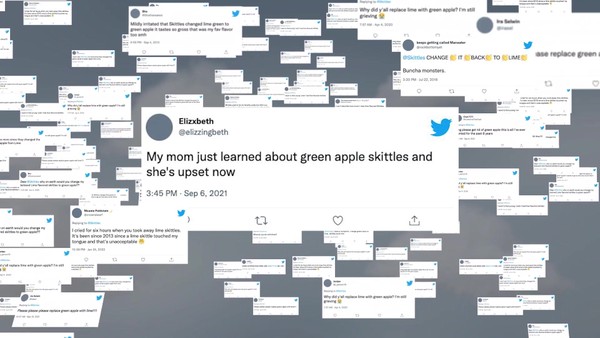PR > PR: Sectors
ARE YOU PRESS WORTHY?
TBWA\CHIAT\DAY, New York / COLUMBIA JOURNALISM REVIEW / 2023
Awards:

Overview
Credits
Overview
Why is this work relevant for PR?
Press coverage of missing people is biased against people of color, a national failing often termed “Missing White Woman Syndrome”. Are You Pressworthy? was created to give users a personalized experience, based on a year’s worth of missing persons data, of what their press coverage would look like should they go missing. This approach was intended to motivate users to use their social channels to lobby journalists and news outlets to correct the bias in news coverage of missing persons, leading to engagement and earned press coverage from over 850 publications globally.
Background
Black people account for over 40% of missing person’s cases in the US, and White women account for less than one third. Despite this, White women account for over half of missing person’s news coverage. This inequality in reporting not only exposes enduring biases in journalism, but also directly harms the missing persons’ chances of being found. In the months before our campaign launched, the case of missing woman Gabby Petito reinvigorated a nationwide conversation around racial biases in missing persons reporting, a failing often termed “Missing White Woman Syndrome”. Our campaign tapped into this conversation by quantifying the imbalance itself. Over the last 60 years, the Columbia Journalism Review (CJR) has established itself as one of the world’s most respected voices on press criticism, and Are You Pressworthy? aimed to strike a nerve by bringing measured, personal context to the inequality in missing persons reporting.
Describe the creative idea
Press coverage of missing people is biased against people of color, with young White women covered extensively, a failing often termed “Missing White Woman Syndrome”. To fight this imbalance, and push for coverage equality, we created AreYouPressworthy.com, an online tool where users enter their demographic information, and see how much press coverage their story would attract, and from which publications, should they go missing. Results were based on a representative sample of 3,630 news stories about missing persons collected by Meltwater between January to November, 2021, cross-referenced with the national missing persons database (NAMUS). Users were encouraged to tweet their personalized results at journalists and news outlets via shareable website outputs, starting a conversation about the inequality and bias found in pressrooms across the US.
Describe the PR strategy
White women are overrepresented in missing persons news coverage, despite people of color accounting for the majority of people who go missing. This inequality in news reporting exposes biases and blind spots in journalism that need to be confronted. Our objective was to reach two target audiences: socially-aware people who were motivated to push for change and journalists in newsrooms throughout America who could implement change. With no paid media support, we were required to lean entirely on earned media and conversation to raise awareness. Our strategy was to pitch a major newsroom to get the attention of the mainstream and engage journalists to raise conversation within the industry. We produced a film showing people from different demographic groups using the AreYouPressworthy.com tool and interviews with Kyle Pope, Editor of Columbia Journalism Review and Jelani Cobb, Staff Writer at the New Yorker and Dean of Columbia Journalism School.
Describe the PR execution
We spotlighted Jelani Cobb, Staff Writer at the New Yorker and Dean of Columbia Journalism School, as the spokesperson for Are You Pressworthy? and secured an exclusive with AP News. An article featuring the campaign and inequality in missing persons reporting was published the day our campaign launched. From there, Are You Pressworthy? was covered by over 850 global news outlets, including NBC News, Forbes, USA Today and ABC News. Are You Pressworthy? was posted and discussed by many prominent journalists; for example Tal Kopan (Deputy D.C. Bureau Chief at the Boston Globe), Sally Hayden (Winner of the Orwell Prize for Political Writing), and Erin Real (National correspondent for NBC News and CNN). Our campaign was also promoted by popular podcast Black Girl Gone, which shines a light on ignored cases of Black women who have gone missing. The campaign ultimately garnered more than 1.12 Billion PR impressions.
List the results
AreYouPressworthy.com received more than 1.12 billion PR impressions, was covered by over 850 global news outlets, including NBC News, Forbes, USA Today and ABC News. Over 220,000 people have calculated their personalized press value, with over 7,000 sharing their results on their social channels in the first week alone. Hundreds of journalists engaged with the campaign on twitter, and some news outlets have begun to reassess their reporting standards around missing people of color.
Is there any cultural context that would help the jury understand how this work was perceived by people in the country where it ran?
Black people account for over 40% of missing person’s cases in the US, and White women account for less than one third. Despite this, White women account for over half of missing person’s news coverage. This inequality in reporting not only exposes enduring biases in journalism, but also directly harms the missing persons’ chances of being found. In the months before our campaign launched, the case of missing woman Gabby Petito reinvigorated a nationwide conversation around racial biases in missing persons reporting, a failing often termed “Missing White Woman Syndrome”. Our campaign tapped into this conversation by quantifying the imbalance itself. Over the last 60 years, the Columbia Journalism Review (CJR) has established itself as one of the world’s most respected voices on press criticism, and Are You Pressworthy? struck a nerve by bringing measured, personal context to the inequality in missing persons reporting.
More Entries from Not-for-profit / Charity / Government in PR
24 items
More Entries from TBWA\CHIAT\DAY
24 items

















